MPEG to CAFConvert MPEG to CAF with MPEG to CAF Converter |
 |
| Home | Getting Started | Download | Buy Now! | Screen Shots | FAQ | Support | Contact |
Total Audio MP3 Converter converts MPEG to CAF as easy as 1-2-3. The software could encode CAF file with different codecs such as PCM 8-bit, PCM 16-bit, PCM 24-bit, PCM 32-bit, IMA ADPCM (4-bit), and GSM. The converter can also combine multiple MPEG files to one CAF. The software is also a powerful audio converter that converts any formats to common audio formats such as MKA, M4A (MPEG-4 audio), AIFF, FLAC, M4R (iPhone ringtone), CAF, MP2, M4B (MPEG-4 audiobook), WAV, MMF, etc. It could convert MTS to WMA, QCP to AU, RMVB to OGG, UMX to AAC, M4V to CAF, H.264 to AIFF, THD to AAC, H.263 to MPA, and so on. Total Audio MP3 Converter supports batch conversion and, is full compatible with 32-bit and 64-bit editions of Vista and Windows 7.
What is MPEG? The MPEG standards consist of different Parts. Each part covers a certain aspect of the whole specification. The standards also specify Profiles and Levels. Profiles are intended to define a set of tools that are available, and Levels define the range of appropriate values for the properties associated with them. MPEG has standardized the following compression formats and ancillary standards:
In addition, the following standards, while not sequential advances to the video encoding standard as with MPEG-1 through MPEG-4, are referred to by similar notation:
Moreover, relatively more recently than other standards above, MPEG has started following international standards; each of the standards holds multiple MPEG technologies for a way of application. For example, MPEG-A includes a number of technologies on multimedia application format.
What is CAF? Core Audio Format is designed to overcome limitations of older digital audio formats, including AIFF and WAV. Just like the QuickTime .mov container, a .caf container can contain many different audio formats, metadata tracks, and much more data. Not limited to a 4 GB file size like older digital audio formats, a single .caf file can theoretically save hundreds of years of recorded audio due to its use of 64-bit file offsets. CAF files have several advantages over other standard audio file formats: unrestricted file size, safe and efficient recording, supports for many data formats, supports for many types of auxiliary data, and supports for data dependencies. Step-by-Step Instructions to Convert MPEG to CAF:
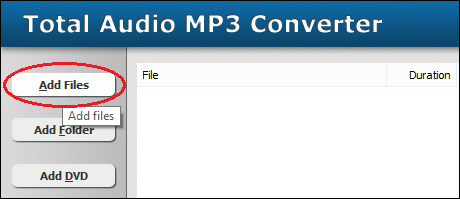 Click "Add Files" to choose MPEG files. 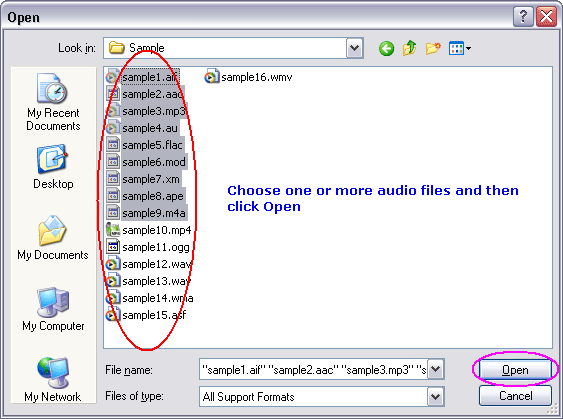 Choose one or more MPEG files you want to convert and then click Open. Total Audio MP3 Converter will open the files and get file information such as duration, bit rate, sample rate, and channels, and then list the information at conversion list. 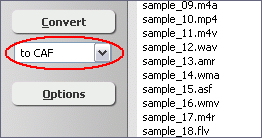 Click on combo box of output format and then choose "to CAF". 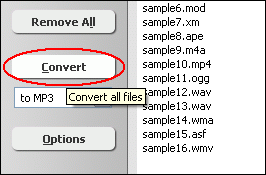 Click "Convert" to convert MPEG files to CAF format. 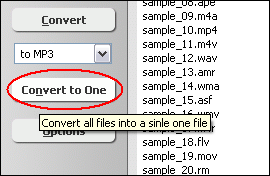 Alternatively, you can also click "Convert to One" to convert and combine all MPEG files to one CAF. 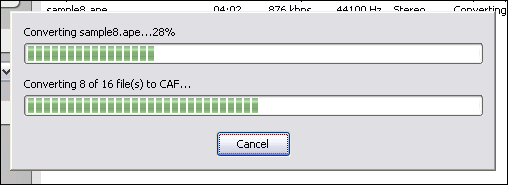 The software is converting MPEG files to CAF. 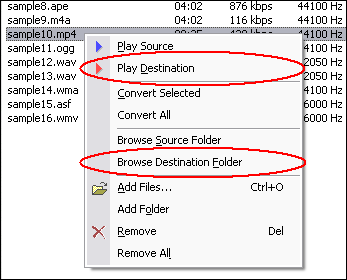 When conversion completes, you can right-click converted item and choose "Play Destination" to play the outputted CAF file; or choose "Browse Destination Folder" to open Windows Explorer to browse the outputted CAF file. MPEG to CAF Software is 100% clean and safe to
install. It's certified by major download sites. Convert MPEG to CAF Related Topics:
|
| Home | Getting Started | Download | Buy Now! | Screen Shots | FAQ | Support | Contact | Links |
| Copyright © 2006-2017 Hoo Technologies All rights reserved. Privacy Policy |

